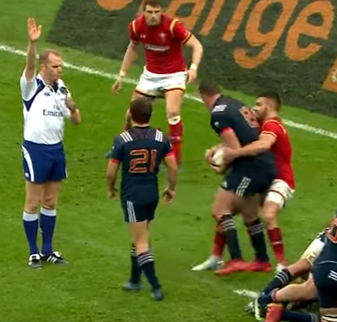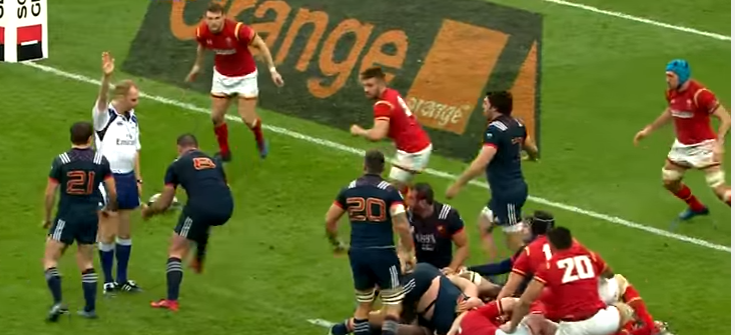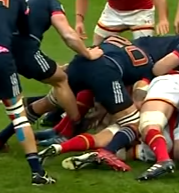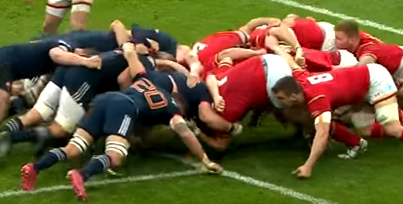We know rugby is a complex game to follow and understand, but are there any other sports that can leave seasoned followers completely unable to answer basic questions about the sport?
In the recent game between the British and Irish Lions and the Hurricanes, the following tweet appeared in our timeline:
How is a neck roll not a yellow but lifting a leg and falling onto shoulder is? #Don‘tGetTheLawsAnymore
— Iestyn Davies (@Dociest) 27 June 2017
After ummming and aahhhing for a while we were completely unable to come up with a logical explanation! Perhaps there isn’t one.
Let’s have a look at the two incidents that the tweet is refereeing to.
Henderson yellow card for “tip tackle”
First up, we have the Iain Henderson yellow card; awarded after he picked up the ‘Canes player, lifted him through the horizontal so causing him to land on his shoulder.
Ian Henderson yellow card offence. pic.twitter.com/N9SYwIAoRB
— rugby (@theblitzdefence) 28 June 2017
The response on Twitter ranged from a penalty all the way to a red card. It’s the sort of offence that could justify a red card, if we took the World Rugby guidelines in their literal sense.
In our view a yellow card is probably about right.
If we consider the safety risk to the tackled player, he is put down more on his side than directly on the top of his shoulder or neck/head and there is little downward force.
Laumape neck roll
Moving on to the second offence, which involved the ‘Canes Laumape, we see the centre make contact at the clear out, initially with Halfpenny’s shoulder, but as Laumape tries to move the Lions’ player he pulls the neck to the side to force him off the ball.
The crucial neck roll penalty as the Canes were threatening the Lions’ line. #HURvBIL pic.twitter.com/5O4RliBAOr
— rugby (@theblitzdefence) 27 June 2017
This is a classic example of what we have come to call a neck roll.
It occurs when a player clearing the ruck holds the jackal’s head or neck, and twists or forces it to the side of the ruck. Where the head goes the body usually follows, forcing the jackal off the ball and away from the ruck.
World Rugby clampdown
World Rugby were conscious that this technique was dangerous, so as part of the 2016 focus on high tackles they also included a specific reference to contact with the neck in their guidelines (see below):

The reference to the neck roll is clear and the sanctions are clear, so why are we seeing the neck roll being treated as a relatively minor offence?
In terms of danger to players, the Laumape offence is equally (if not more) dangerous as the Henderson tackle, but referees have been very reticent about issuing yellow cards for these offences. Why?
The other issue to mention is the frequency with which a clear out by the neck occurs in a top level game. Watch any professional fixture and you will see it every few minutes. On this tour there have been numerous examples – the vast majority of which were picked up at the time or later cited.
Here are a couple of examples. The first involves James Haskell, who provides an excellent clear out in the Chiefs’ game, but closer inspection shows him making contact with the top of the shoulders and neck area.


The second incident is also taken from the Chiefs’ game and ends with Dan Cole being treated for a neck injury after having his neck grabbed in a head on tackle.
What happened to the zero tolerance approach to head and neck tackles? #CHIvBIL pic.twitter.com/dh0DeN8C8V
— rugby (@theblitzdefence) 20 June 2017
What’s the solution?
There are two actions that World Rugby need to urgently take.
The first is to properly enforce the law that says the jackal (the defending player trying to win the ball at the tackle), has to support their body weight at the breakdown.
This is rarely enforced which is leading to the jackal having his head inches above the ground over the ball, leaving the player clearing out no option but to make contact with the head or upper shoulders to clear out.
By forcing the jackal to support their own body weight, the head will be higher off the ground, so allowing space for the clearing player to get under the jackal to move him.
The second action should be to enforce their own directive around the neck roll, both on the field and with subsequent citings.
This isn’t just an area for World Rugby to tackle though. Ultimately it is the players – usually following directions from coaches, who are making these dangerous actions. We know from a previous article that players have been coached to attack the neck area – here.
It’s time for players to consider the welfare of their fellow professional and stop the practice of neck rolls.
To follow theblitzdefence on Facebook like us here.






















